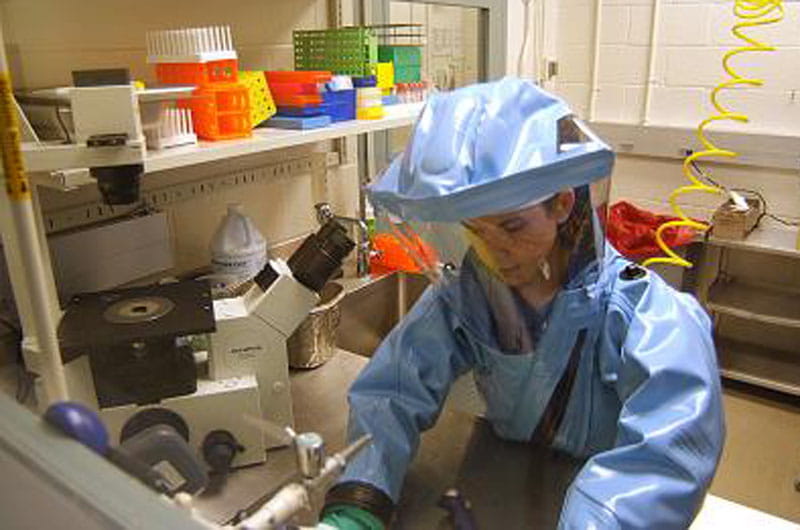How Long Can Ebola Survive Outside the Body?

- Drexel Selects New, World-Class Life Sciences Building at 3201 Cuthbert Street for Medical Research Operations
- Breakthrough on Gene Therapy for Hereditary Spastic Paraplegia
- Drexel Environmental Collaboratory Releases Cross-Sector Findings on Severe Weather Recovery Challenges
- Drexel Launches the Manuel Stamatakis Center for Alternative Investments at the LeBow College of Business

Researchers at Drexel and the University of Pittsburgh are plotting a course for future research on the Ebola virus.
The Ebola virus travels from person to person through direct contact with infected body fluids. But how long can the virus survive on glass surfaces or countertops? How long can it live in wastewater when liquid wastes from a patient end up in the sewage system? In an article published Dec. 9 in the journal Environmental Science & Technology Letters, Charles Haas, PhD, LD Betz professor in Drexel University’s College of Engineering and head of the Civil, Architectural and Environmental Engineering Department, and a team of researchers from the University of Pittsburgh, review the latest research to find answers to these questions.
“The World Health Organization has been saying you can put (human waste) in pit latrines or ordinary sanitary sewers and that the virus then dies,” said Kyle Bibby, PhD, assistant professor of civil and environmental engineering in Pitt’s Swanson School of Engineering. “But the literature lacks evidence that it does. They may be right, but the evidence isn’t there.”
The team explains that knowing how long the deadly pathogen survives on surfaces, in water, or in liquid droplets is critical to developing effective disinfection practices to prevent the spread of the disease. Currently, the World Health Organization guidelines recommend to hospitals and health clinics that liquid wastes from patients be flushed down the toilet or disposed of in a latrine. However, Ebola research labs that use patients’ liquid waste are supposed to disinfect the waste before it enters the sewage system. The researchers team set out to determine how new data on Ebola can inform these practices.
After scouring scientific papers for data on how long the virus can live in the environment, the team found a dearth of published studies on the matter. This indicates that more research is necessary to determine whether the virus can survive on a surface and cause infection or how long it remains active in water, wastewater or sludge.
While access to Ebola virus for this type of research is limited and costly, according Haas, there are still ways to gather the data necessary to make better risk assessments.
“It is possible to identify surrogate viruses that are non-pathogenic but share certain characteristics of Ebola and use these to study Ebola’s behavior,” Haas said. “Unfortunately the data driving current risk management policies is out-of-date or non-existent. Careful research, including the use of surrogate viruses, is one of several steps that must be taken to better contain outbreaks in the future.”
Haas, who recently authored a paper in PloS Currents: Outbreaks questioning the CDC’s 21-day quarantine policy for people who have been exposed to Ebola, worked with the team from Pitt to review previous studies about Ebola transmission and identify the areas where more research is needed.
With funding from the National Science Foundation, the team will identify surrogate viruses that are physiologically similar to Ebola —Adenovirus, Hepatitis A and Poliovirus for example— and study their survival rates in water and wastewater. The findings of this study will inform water treatment and waste handling procedures in a timely manner, while research on the Ebola virus, itself, is still being conducted.
Drexel News is produced by
University Marketing and Communications.